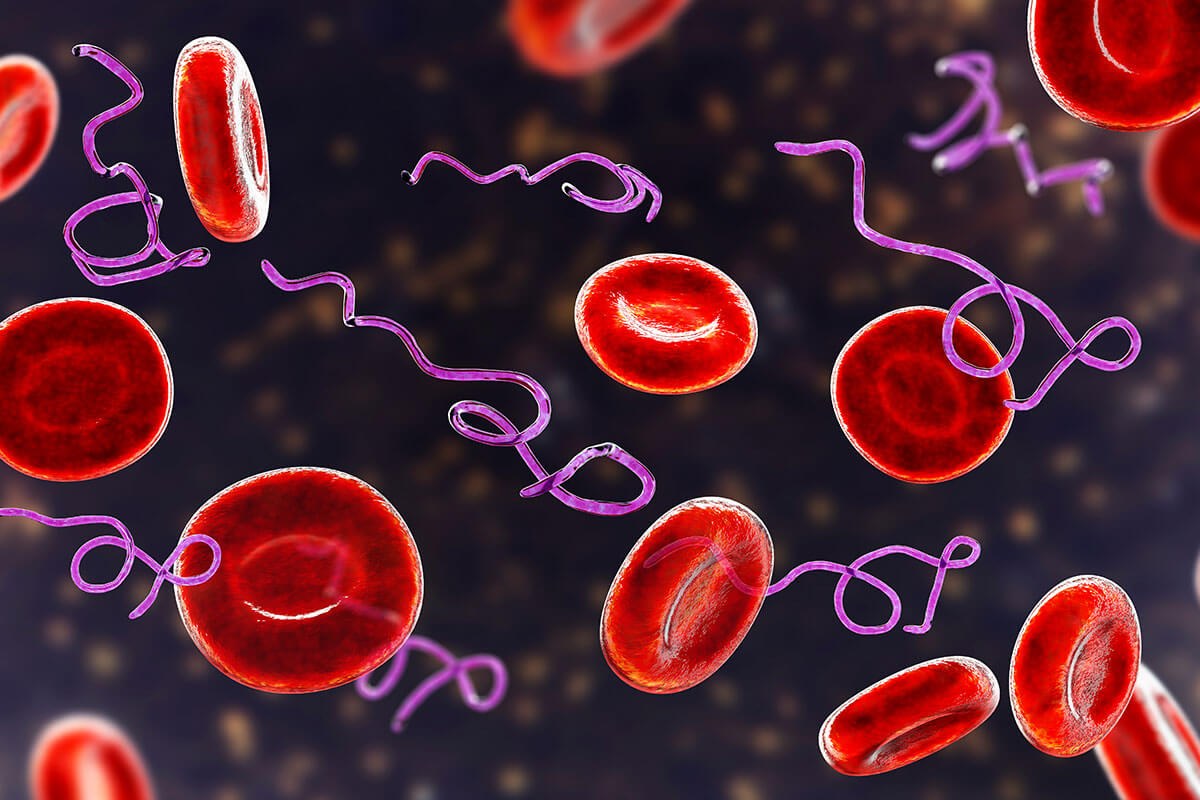What Is Neurological Lyme Disease? Understanding Its Impact
Feeling a bit off lately, perhaps with strange sensations or difficulties thinking clearly? Well, sometimes, the culprit behind these puzzling changes could be something called neurological Lyme disease. This condition, which can be quite challenging, affects your nervous system, the very core of how your body and mind work together. It's a topic that many people are looking to learn more about, especially as awareness grows about the varied ways Lyme disease can show up.
When we talk about neurological disorders, we're referring to conditions that really target how your nervous system—that's your brain, spinal cord, and all the nerves branching out—functions. As our clinic understands, there are hundreds of these conditions, and they can affect people in many different ways. Knowing about neurological Lyme disease is, you know, a really important step if you're trying to figure out some unexplained symptoms.
This article aims to shed some light on what neurological Lyme disease actually is, how it makes its presence known, and what steps you can take. We want our patients, and really anyone seeking information, to leave feeling better and more informed about their health. So, let's explore this particular condition, shall we?
- Divvy Credit Card Reviews
- Arizona Diamondbacks Prediction Today
- How To Find Property Owner Contact Information
Table of Contents
- What is Neurological Lyme Disease?
- How Lyme Disease Affects the Nervous System
- Common Neurological Symptoms of Lyme Disease
- Diagnosis: Pinpointing Neurological Lyme
- Treatment Approaches for Neurological Lyme
- When to Seek Help: The Importance of Neurological Care
- Frequently Asked Questions About Neurological Lyme Disease
What is Neurological Lyme Disease?
Neurological Lyme disease happens when the infection from Lyme disease, which is caused by bacteria called Borrelia burgdorferi, makes its way into your nervous system. This can be a really big deal because, as we know, your nervous system includes your brain, your spinal cord, and all the nerves that reach out to the rest of your body. These are the parts that control everything from your thoughts to how you move, so it's a pretty central system. In a way, it's like an uninvited guest getting into the command center of your body, causing all sorts of disruptions.
This condition is, you know, one of many neurological disorders that can fundamentally disrupt how your nervous system works. While many people think of Lyme disease as just causing a rash or joint pain, for some, the bacteria can spread, leading to more serious problems affecting the brain, spinal cord, and nerves. It’s a bit like a ripple effect, where a small initial problem can spread and cause bigger issues if not addressed. Our comprehensive neurologic clinic treats patients for all sorts of neurological disorders, and this is certainly one that requires careful attention.
The good news, however, is that while it sounds serious, there are ways to approach it. Understanding what it is and how it acts is, you know, a very important first step. This particular form of Lyme disease can show up at different times after the initial tick bite, sometimes even weeks or months later, which can make it a little tricky to connect the dots. It’s not always an immediate thing, which is why it's something to be aware of.
How Lyme Disease Affects the Nervous System
So, how does Lyme disease actually get into your nervous system and cause trouble? Well, the bacteria, once they enter your body from a tick bite, can travel through your bloodstream. If they're not stopped early on, they can, you know, cross what's called the blood-brain barrier, which is a protective layer around your brain and spinal cord. Once past this barrier, these bacteria can then cause inflammation and damage directly to the nerve tissues. It's a bit like a tiny, unwanted visitor getting past security and causing problems inside a very important building.
The nervous system, as we’ve discussed, is made up of two main parts: the central nervous system (your brain and spinal cord) and the peripheral nervous system (all the other nerves that branch out). Neurological Lyme disease can, you know, impact either or both of these parts. For example, it might cause inflammation in the brain itself, which is called encephalopathy, or it could affect the nerves that go to your limbs, leading to different sensations or weakness. This is why the symptoms can be so varied, because the damage can happen in many different places within this complex network.
It's not just the bacteria themselves causing the trouble; it’s also your body’s own immune response to the infection. Sometimes, your immune system, in its effort to fight off the bacteria, can also accidentally cause harm to your own nerve cells. This can, you know, lead to ongoing problems even after the bacteria are gone. This is why treatment often focuses not just on getting rid of the bacteria, but also on managing the inflammation and supporting nerve health. It’s a really delicate balance, in some respects.
Common Neurological Symptoms of Lyme Disease
The signs of neurological problems from Lyme disease can be quite diverse, reflecting the wide reach of your nervous system. These symptoms are, you know, directly caused by or occur within the nervous system itself. Because your brain, spinal cord, and nerves affect so many different body functions, the signs can show up in many surprising ways. It's not always just a headache, for instance; it can be much more varied.
Brain and Cognitive Effects
One of the more common ways neurological Lyme disease shows up is through effects on the brain, impacting how you think and feel. People often talk about "brain fog," which is, you know, a really good way to describe it. This can mean having trouble concentrating, finding words, or remembering things that happened recently. It might feel like your thoughts are a bit cloudy or slow, making daily tasks that require mental effort feel much harder than they should. This is, you know, a very frustrating symptom for many.
Other brain-related symptoms can include persistent headaches, which might be quite severe and different from typical tension headaches. Some people also experience problems with their sleep, either having trouble falling asleep or staying asleep, or feeling tired even after a full night's rest. This can, you know, really affect your overall energy and how you feel each day. It's a bit like trying to run a computer when it's constantly freezing up.
You might also notice changes in your mood or personality. Things like increased irritability, feeling down, or experiencing anxiety that wasn't there before can, you know, be connected to the brain's involvement. These are, you know, often very distressing changes for individuals and their loved ones. Our clinic understands that neurological disorders, like this one, can really impact daily life, so we focus on providing insights into diagnosis and treatment options that help.
Nerve and Muscle Effects
Beyond the brain, neurological Lyme disease can also affect the nerves that branch out to your limbs and muscles, leading to a different set of problems. You might experience numbness, tingling, or a burning sensation in your arms, legs, hands, or feet. This is, you know, often described as a "pins and needles" feeling that doesn't go away. Sometimes, people might feel a strange crawling sensation under their skin, which is, you know, quite unsettling.
Muscle weakness can also be a significant symptom, making it hard to do things like lift objects, walk steadily, or even just stand for long periods. This weakness can, you know, sometimes come and go, or it might affect one side of the body more than the other. You might also notice muscle twitching or cramps that seem to appear out of nowhere. These are, you know, all signs that the nerves controlling your muscles might be irritated or damaged.
Another specific nerve-related symptom is Bell's palsy, where one side of your face might droop because the facial nerve is affected. This can, you know, be very alarming to experience. These sorts of symptoms highlight how neurological disorders affect the brain, spinal cord, and nerves, and why getting proper care from a physician or other healthcare professional is so important. We want our patients to leave our clinic feeling better than when they came in, and addressing these physical symptoms is a big part of that.
Mood and Sleep Changes
As mentioned briefly, the impact of neurological Lyme disease can extend to your emotional well-being and sleep patterns, which are, you know, closely tied to brain function. People might find themselves feeling unusually irritable, or perhaps experiencing periods of feeling very down or anxious without a clear reason. These emotional shifts can be, you know, quite challenging to deal with and can affect relationships and daily activities. It's not just a matter of "feeling blue"; it's often a biological change.
Sleep disturbances are also very common. This could mean having trouble falling asleep even when you're tired, or waking up frequently during the night and then finding it hard to get back to sleep. Some individuals might experience restless leg syndrome, which is, you know, an uncomfortable sensation in the legs that makes you want to move them, especially at night. These sleep issues can, you know, really contribute to overall fatigue and make other symptoms feel worse during the day. Getting good rest is, you know, really important for your body's healing process.
These mood and sleep problems are, you know, just another example of how deeply neurological disorders can affect your system. They remind us that the nervous system is a complex array of medical conditions that fundamentally disrupt its functioning. Our clinic aims to provide information on symptoms, causes, and the latest treatment options available for managing these complex conditions, so people can find ways to feel more like themselves again.
Diagnosis: Pinpointing Neurological Lyme
Figuring out if someone has neurological Lyme disease can, you know, be a bit complicated because its symptoms often look like those of other neurological disorders. This is why a very careful and thorough evaluation by a doctor who understands neurological conditions is, you know, absolutely essential. It's not always a straightforward path, but a good doctor will know what to look for.
The process usually starts with a detailed talk about your health history, including any possible exposure to ticks or any past Lyme disease diagnoses. Your doctor will also do a physical examination, paying close attention to your neurological function. This might involve checking your reflexes, your balance, your strength, and your sensation. These are, you know, all basic ways to see how your nervous system is working.
Blood tests are often used to look for antibodies to the Lyme bacteria. However, it's important to know that these tests aren't always perfect, especially in the early stages or in cases where the infection has been present for a while. Sometimes, if neurological involvement is strongly suspected, a spinal tap, also known as a lumbar puncture, might be done. This involves taking a small sample of the fluid that surrounds your brain and spinal cord to check for signs of infection or inflammation directly within the nervous system. This particular test can, you know, give a very clear picture of what's happening inside. Getting insights into diagnosis and treatment options is, you know, a very big part of what we help with.
Treatment Approaches for Neurological Lyme
When it comes to treating neurological Lyme disease, the main goal is to get rid of the bacteria and help your nervous system recover. The primary treatment usually involves antibiotics, which are given for a longer period and often in higher doses than for early-stage Lyme disease. These antibiotics can, you know, be given by mouth, but sometimes, especially for more severe cases, they might be given intravenously, meaning directly into a vein. This allows the medicine to get into your system more quickly and effectively, which is, you know, really important for tackling the infection.
The length of treatment can vary, depending on how severe your symptoms are and how well you respond. It's not a one-size-fits-all situation, so your doctor will, you know, adjust the plan based on your individual needs. Beyond antibiotics, supportive treatments can also be very helpful. These might include medicines to manage specific symptoms like pain, headaches, or sleep problems. Physical therapy can, you know, also be very useful if you have muscle weakness or balance issues, helping you regain strength and coordination. Our clinic focuses on helping patients with neurological disorders, and treatment options are, you know, a big part of what we offer.
Sometimes, even after the infection is cleared, some people might experience ongoing symptoms, which is often called post-treatment Lyme disease syndrome. This is, you know, not because the bacteria are still there, but possibly due to lingering inflammation or damage to the nervous system. In these cases, treatment shifts to managing these chronic symptoms and improving your quality of life. This could involve different therapies, lifestyle adjustments, and ongoing support. The goal is always to help you feel better, and we want our patients to leave our clinic feeling better than when they arrived, which is, you know, a really big priority for us.
When to Seek Help: The Importance of Neurological Care
If you've been exposed to ticks or have a known history of Lyme disease and you start experiencing any of the neurological symptoms we've talked about—like persistent headaches, brain fog, numbness, or changes in mood—it's, you know, really important to get medical attention without delay. Early diagnosis and treatment can, you know, make a very big difference in how well you recover. Waiting too long can sometimes make the condition harder to treat, so acting quickly is, you know, a good idea.
Finding a clinic that specializes in neurological disorders is, you know, a very smart step. Our comprehensive neurologic clinic treats patients for all neurological disorders, understanding that these conditions affect your brain, spinal cord, and nerves. We have a team led by board-certified neurosurgeons and nurse practitioners, and they are, you know, ready to provide the clinical care needed by a physician or other healthcare professional. We want you to trust your health to a team that understands the complexities of the nervous system.
Remember, neurological symptoms are symptoms caused by, or occurring in, the nervous system. Whether it's something like neurological Lyme disease or another one of the hundreds of neurological disorders out there, getting a proper evaluation is, you know, key. We are here to help you understand your symptoms, get an accurate diagnosis, and explore the best treatment options available. Our goal is always to help you feel better and to learn more about neurological disorders on our site, and also to check out this page for more information.
Frequently Asked Questions About Neurological Lyme Disease
Here are some common questions people ask about neurological Lyme disease:
Can Lyme disease cause neurological problems years later?
Yes, it's possible. While neurological symptoms often show up weeks or months after the initial infection, some people might experience problems that surface much later, even years down the line, especially if the initial infection wasn't treated or wasn't treated fully. This is, you know, why it's so important to be aware of the long-term possibilities and to seek help if new symptoms appear. The bacteria can, you know, sometimes stay hidden in the body for a long time.
What are the symptoms of neurological Lyme disease in adults?
In adults, the symptoms of neurological Lyme disease can be quite varied. They often include things like severe headaches, neck stiffness, memory problems, difficulty concentrating (often called "brain fog"), and nerve pain that can feel like burning or shooting sensations. You might also experience numbness, tingling, or weakness in your limbs. Sometimes, people can also develop facial paralysis, like Bell's palsy, or problems with their balance. These are, you know, just some of the ways it can show up.
How is neurological Lyme disease diagnosed?
Diagnosing neurological Lyme disease usually involves a combination of things. Doctors will, you know, look at your symptoms and your history, especially if you've been in areas where ticks are common. Blood tests are used to look for antibodies to the Lyme bacteria. If neurological involvement is suspected, a spinal tap (lumbar puncture) might be performed to check the fluid around your brain and spinal cord for signs of infection or inflammation. Sometimes, other tests like an MRI might be used to rule out other conditions. For more information on Lyme disease generally, you might find resources from the Centers for Disease Control and Prevention (CDC) helpful.
This information is for general educational purposes only and is not a substitute for professional medical advice. Always consult with a qualified healthcare provider for any health concerns or before making any decisions related to your health or treatment.

Neurological Lyme Disease | Dr. Todd Maderis

WEBINAR: Neurological Presentations in Lyme Disease (Free)

Neurological Lyme Disease - Dr. Todd Maderis